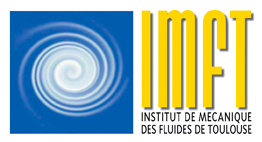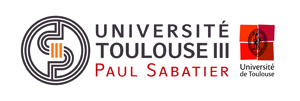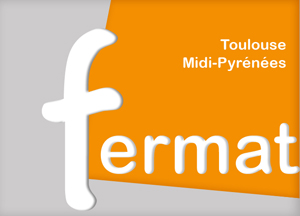Numerical study and physical analysis of the transonic interaction and morphing around supercritical wings at high Reynolds number
César Jimenez-Navarro
Lundi 6 novembre à 14h30
Amphithéâtre Nougaro
Abstract:
The present thesis was conducted under the European project H2020 N° 860909 TEAMAero, «Towards Effective Flow Control and Mitigation of Shock Effects in Aeronautical
Applications», https://cordis.europa.eu/project/id/860909/fr and https://h2020-teamaero.eu/ in partnership with IMFT and in continuation of the H2020 N° 723402 project SMS – “Smart Morphing and Sensing for aeronautical configurations”, https://cordis.europa.eu/pr-oject/id/723402 and www.smartwing.org/SMS/EU , coordinated by IMFT. This thesis investigated transonic regime phenomena over supercritical wings in the high Reynolds number range by means of High-Fidelity numerical simulation through the NSMB – Navier-Stokes MultiBlock code, fruit of European consortium and upgraded in the last decade by CFS-Engineering in Lausanne, ICUBE Laboratory in Strasbourg University and IMFT-Institut de Mécanique des Fluides de Toulouse. Emphasis has been placed on the interaction of the shock wave with the boundary layer separation and the downstream instability modes associated with specific classes of coherent vortex structures. The transonic buffet dynamics as well as the shock-vortex interaction have been analysed numerically thanks to well adapted turbulence modelling approaches in the context of the Detached Eddy Simulation and of the Organised Eddy Simulation. Development of a novel stochastic forcing approach has been proposed, able to enhance upscale turbulence modelling effects and to refrain excessive turbulence diffusion levels that arise due to downscale cascade hypotheses in practically all turbulence modelling methods. This approach is based on re-injection of turbulence in sheared regions able to reproduce upscale energy transfers through shear-sheltering that induces thinning of the shear layers. Comparison with experimental results on the V2C wing of Dassault Aviation from the EU-TFAST, https://cordis.europa.eu/project/id/265455 project showed improvement of the aerodynamic forces prediction. Furthermore, this thesis investigated electroactive morphing concepts through the SMS project on two wing prototypes of A320 type: First, vibration and slight deformation of the near-trailing edge region has been investigated on the tRS -“transonic Reduced Scale” prototype. The numerical results have been supported by experiments in the wind tunnel of the Institute of fluid-flow machinery of the Polish academy of sciences, IMP-PAN in Gdansk. Moreover, a new morphing concept using travelling waves applied in specific downstream areas towards the trailing edge has been investigated numerically on a larger chord of 70 cm A320 wing profile, for which it is rare to realise physical experiments in usual transonic wind tunnels due to the chord’s length, being near half scale of the tip area of the A320 wing. This concept is a first step towards an electroactive flexible skin able to deform and vibrate in multiple degrees of freedom. A large parametric study revealed that this kind of actuation induces different shock motion regimes where the most remarkable allows a complete suppression of the buffet. This thesis has thoroughly investigated the potential of these morphing approaches in manipulating the surrounding turbulence through fluid-structure interaction thus producing beneficial feedback effects towards the overall upstream area and leading to mitigation of the transonic buffet detrimental effects. Optimal actuation ranges in respect of frequency and amplitude vibrations have been evaluated through a large parametric study. The results have shown increase of the aerodynamic performances and reduction of the instability modes linked with noise sources from the trailing edge unsteadiness, thus leading to greener aircraft transport. The trailing edge vibration led to an order of 3 % of lift-to drag increase and the travelling wave morphing to an 1 % increase. This thesis put ahead the potential of these electroactive morphing approaches, being far beyond the state-of-the-art, towards real flight applications for the wings of the future.
Keywords
Morphing, Fluid-Structure Interaction, High speed aerodynamics, Transonic buffet, Shock wave boundary layer interactions (SBLI), Flow control, Computational Fluid Dynamics (CFD), Turbulence modelling, High fidelity numerical simulations, High performance computing (HPC).
Résumé :
La présente thèse a été réalisée dans le cadre du projet européen H2020 N° 860909 TEAMAero, https://cordis.europa.eu/project/id/860909/fr et https:// h2020-teamaero.eu/ et fait suite au projet EU-723402 SMS – “Smart Morphing and Sensing ”, https://cordis.europa.eu/project/id/723402 et www.smartwing.-org/SMS/EU. Cette thèse analyse des phénomènes transsoniques sur des ailes supercritiques en nombre de Reynolds élevés par simulation numérique Hi-Fi, utilisant le code de calcul NSMB – Navier-Stokes MultiBlock, fruit d’un consortium Européen enrichi au cours de la dernière décennie par CFS-Engineering, ICUBE de l’Université de Strasbourg et l’IMFT-Institut de Mécanique des Fluides de Toulouse. L’accent a été mis sur l’interaction de l’onde de choc-couche limite et les modes d’instabilité associés à des classes spécifiques de tourbillons cohérentes. La dynamique du tremblement transsonique ainsi que l’interaction choc-tourbillons ont été analysées grâce à des approches de modélisation de la Turbulence bien adaptées pour la capture des structures cohérentes, «Detached Eddy Simulation» et «Organised Eddy Simulation». Une nouvelle approche de forçage stochastique a été proposée, capable de réduire les effets de diffusion turbulente excessive qui surviennent à cause des hypothèses de cascade directe utilisées largement dans les approches de modélisation. Cette approche, basée sur la réinjection de la turbulence dans des régions cisaillées, est capable de reproduire des transferts d’énergie en cascade inverse («upscale») qui entraînent un amincissement des zones cisaillées. La comparaison avec les résultats expérimentaux sur l’aile V2C de Dassault Aviation du projet EU-TFAST, https://cordis.europa.eu/project/id/265455, a montré une amélioration de la prédiction des forces aérodynamiques. De plus, cette thèse a étudié des concepts du morphing électroactif dans la continuité du projet SMS, sur deux prototypes d’ailes de type A320: premièrement, des vibrations et légères déformations de la région du bord de fuite ont été étudiées sur le prototype tRS -“transonic Reduced Scale”. Les résultats numériques ont été soutenus par des expériences en soufflerie de l’Institut « fluid-flow machinery IMP-PAN» à Gdansk. De plus, un nouveau concept de morphing utilisant des ondes progressives appliquées dans des zones spécifiques vers le bord de fuite a été étudié numériquement sur un profil d’aile A320 de 70 cm de corde, pour lequel il est rare de réaliser des expériences physiques dans les souffleries transsoniques habituelles en raison de la longueur de la corde, presque à mi-échelle de celle du bout d’aile A320. Ce concept constitue une première étape vers une peau flexible électroactive capable de se déformer et de vibrer en plusieurs degrés de liberté. Une vaste étude paramétrique a révélé que ce morphing induit différents régimes du développement des ondes de choc, dont le plus remarquable permet une suppression complète du tremblement. Cette thèse a étudié en détail le potentiel de ces approches du morphing capable de manipuler la turbulence environnante par l’interaction fluide-structure, produisant ainsi des effets de rétroaction bénéfiques sur toute la région amont et contribuant à atténuer les effets néfastes du tremblement. Des intervalles de fréquence et d’amplitude de vibrations optimales ont été évaluées grâce à une vaste étude paramétrique. Les résultats ont montré une augmentation des performances aérodynamiques et une réduction des modes d’instabilité liés aux sources de bruit produit par le bord de fuite, ce qui contribue à un transport aérien plus respectueux de l’environnement. Le morphing par vibrations du bord de fuite a permis une augmentation d’environ 3 % du rapport portance-traînée et celui par ondes progressives, une augmentation de 1 %. Cette thèse met en avant le potentiel de ces approches situées au-delà de l’état de l’art, pour des applications futures en vol réel.
Jury
- Prof. Eric GONCALVES Profeseur, ENSMA Poitiers, France – Rapporteur
- Prof. Bruno KOOBUS Professeur, Université de Montpellier, France – Rapporteur
- Prof. Franco AUTERI Professor, Politecnico di Milano, Italy – Examinateur
- Prof. Horia HANGAN Professor, Ontario Tech. Univ., Canada – Examinateur
- Prof. Yannick HOARAU Prof. des Universités à ICube, France – Examinateur
- Prof. Pawe l FLASZYNSKI Aerodynamics Dept., IMP-PAN, Poland – Examinateur
- Dr. Flavien BILLARD Docteur-Ing´enieur Dassault Aviation, France – Examinateur
- Prof. Jean-François ROUCHON INPT – LAPLACE, Directeur de l’ENSEEIHT, France – Examinateur
- Dr. Gilles HARRAN Maître de Conférences, INPT, IMFT, France – Co-Encadrant de thèse
- Dr. Marianna BRAZA Directrice de Recherche CNRS, IMFT, France – Directrice de thèse





